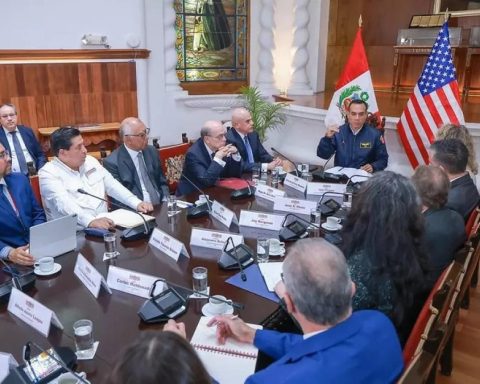More than five decades ago, when the biologist Antonio de la Torre entered the Chiapas jungle with the intention of catching jaguars in order to study them and contribute to their conservation, the Mayans of bonampak they laughed at his ill-fated attempts. They warned him that if he wanted to catch him he would have to ask permission to the Lord of the Jungleto be captured.
The desire to advance in his research tamed his arrogance and he agreed to perform a ritual, with balché, a sacred alcoholic drink involved.
That day, the jungle opened up to his senses and he began to forge what he is now: an expert who has managed to follow in the footsteps of some 50 specimens, distinguish their tracks and even decipher what their poop says, in an ecosystem at risk.
Stories like this one that tells Alejandro Melgoza Rocha, in the text entitled “The Lord of the jungle and the train”, are shared in the book “Collapse Mexico. The culprits and the victims of our climate crisis”, coordinated by the journalist Mael Vallejo and edited by Grijalbo.
It is a selection of eight reports that expose investigations carried out by Carlos Carabaña, Karla Casillas, Carlos Martínez, Alejandro Melgoza, José Luis Pardo, Alberto Pradilla, Alejandra Sánchez and Michael Snyder, which show sites that suffer the ravages of the hand of man when it comes to polluting and spoiling the ecosystem.
There are stories of farmers dragged to work in the coal mines by the difficulty of doing business in the cultivation of vegetables, in the coal region of Coahuila or that of the devil’s cauldron into which the industrial zone of Tula, Hidalgo, has become. due to the operation of the thermoelectric plant that contaminates not only that corner of the Mezquital Valley, but the entire Valley of Mexico or that of six children, 10,000 cenotes and 49,000 pigs in pig farms that have turned pieces of Yucatan into pigsty, among other jobs , which, almost rudely, make one of the most important issues for human survival interesting: Mexican-style environmental degradation.
Alejandro Melgoza Rocha, co-author of the book, explains in an interview that the objective is to expose environmental problems in different regions of the country in order to contribute to exposing the way in which Mexico contributes to environmental degradation, the emission of greenhouse gases, which which leads to global warming and climate change, as well as to shed light on its consequences.
We wanted to put what is happening in a real context, with problems that, over the years, have not been resolved.
In addition, exposing the way in which communities are emerging that oppose the continued damage to ecosystems and from their environment work against the climate crisis.
He says that they went to the communities to find those words that show that the natives were not crazy two decades ago, when they began to denounce these increases in temperature, and that they reviled governments that invalidated them for not being accompanied by scientific support.
“Communities are the most important indicator on the planet to understand these changes, which have been quite noticeable,” he points out.
That is why he says that a trip in search of some jaguar specimen in Mexican lands was valuable to see how infrared cameras have served to document the reduction of jaguar populations in the area and the transformation of their habits, due to the affectation of their environment, as well as the concern of the communities for the impact that the construction of the Mayan Train will have on the life expectancy of these cats. All this, he assures, was worth it and he shares it in this book, although the cat denied them a look.














